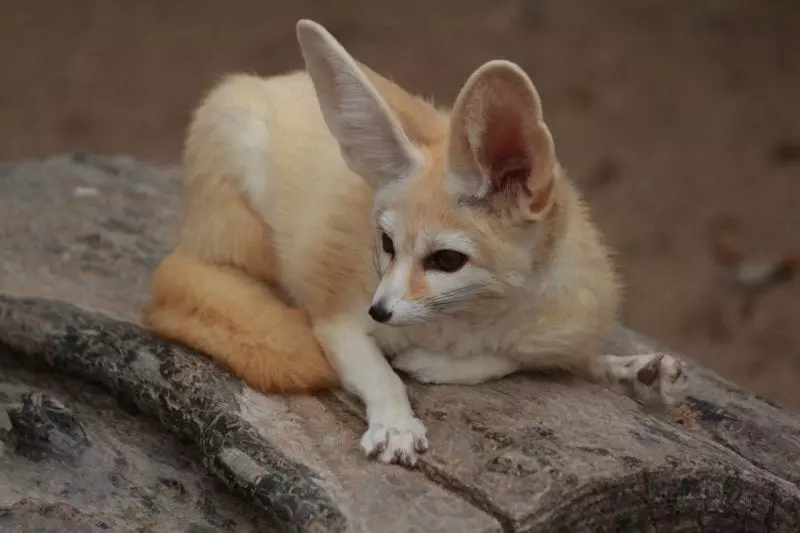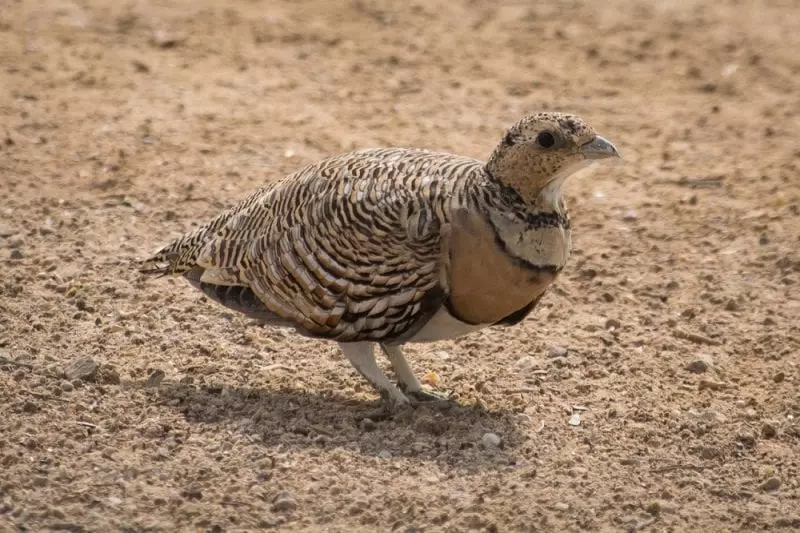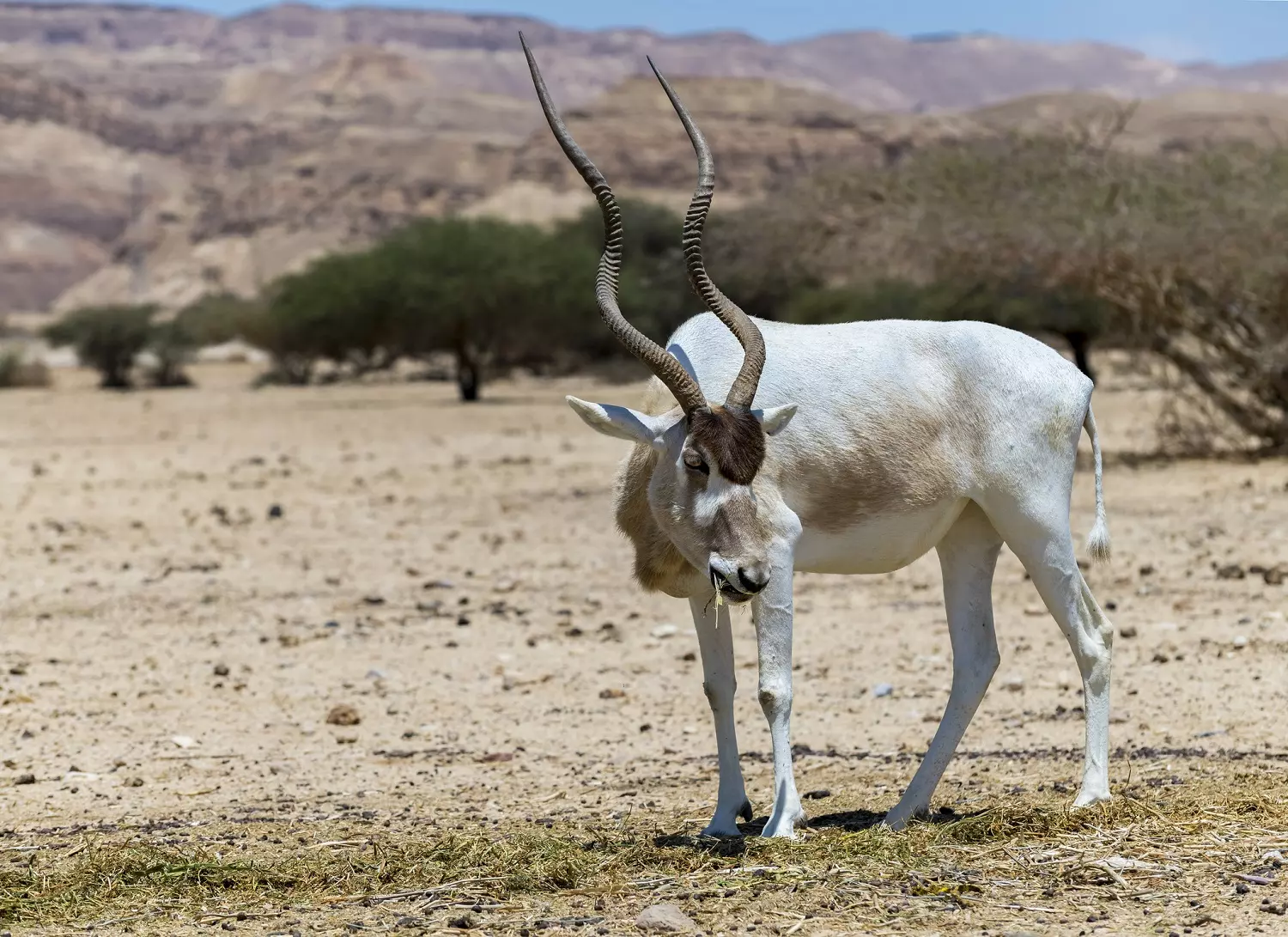When God created the world, He created a world that was perfect. There were no polar ice caps and there were no deserts.
After the worldwide flood, climate conditions changed dramatically. Scientists have discovered vast tropical rain forests under the sands of the Sahara Desert. But in only a few hundred years places on earth started getting dryer. Deserts started to form.
God gave certain animals genetic code to provide them with abilities to survive the desert heat and lack of water. Being an all-knowing God, He knew that deserts would be a problem to most animals and He gave some the ability to change and adapt.
We are going to learn about three such animals.
Addax
Our first animal is the addax. This animal is an antelope found in the Sahara desert. In fact, the addax is the most desert–adapted antelope in the world. The males weigh 230–300 pounds and are 37–45 inches high at the shoulder. Their striking spiral horns are 30–43 inches long. Females are slightly smaller being 10-20 percent lighter. Their horns are thinner than the males, but just as long. A stocky build and sturdy, somewhat shorter legs give the addax endurance but not speed. The coat is a light cream with the tail, underparts, hindquarters and legs white.
How did God help the addax cope with the hard life of the desert? The addax is equipped with broad hooves for easy travel on loose sand. Their coat is highly reflective, a great defense against the desert sun. They also have the ability to extract all of the water they need from the plants they eat, and to conserve that water by excreting dry feces and concentrated urine.
The addax has the ability to tolerate a rise in body temperature by as much as 11 degrees before it has to pant to cool down. When the desert heat gets unbearable even for the addax, they will rest under the shade of a bush or tree, venturing out after the sun sets. Early morning is the best time for them because the plants have absorbed the maximum amount of water from the air. The addax feed on desert grasses, leguminous herbs, acacias and water-storing plants such as melons and tubers.
Most animals of the desert are small and can find relief from the sun and heat in burrows. The addax can survive the desert at its worst.
Fennec Fox
Our second animal is the fennec fox. This fox is the world’s smallest fox measuring just 10–16 inches long with a 9 inch tail. This fox also lives in the searing heat of the Sahara Desert, and deals with the extensive sun and heat by being mostly nocturnal during the hottest times of the year. This small fox will dig itself a burrow in the cool sand for relief.
The first thing you notice when seeing a fennec fox is its huge ears. These ears help it hear underground grubs, which it digs up to eat, but those ears also rid the fox of excess heat by bringing blood vessels close to the surface of the skin to release heat.
During certain times of the year the desert has cold nights and a thick fur coat helps the fox stay warm. This same fur coat also protects them from the hot sun during the day.The sand of the Sahara gets hot during the day and the foxes’ furry paws help protect them and provide aid in walking on loose sand.
The fennec will eat whatever they can find. Their favorite food is desert rodents, but they will eagerly eat eggs, reptiles and insects including grubs. They have the ability to attain most of their liquid needs from the food they eat and supplement their diet with desert berries and other succulent plants allowing them to go long periods without drinking water.
Sandgrouse
 Our next desert dweller is the sandgrouse. There are 14 species inhabiting the deserts and steppes of Africa and Asia. Sandgrouse are similar in shape and size to pigeons with long pointed wings and feathers all the way down to their feet. They range in length from 9-16 inches.
Our next desert dweller is the sandgrouse. There are 14 species inhabiting the deserts and steppes of Africa and Asia. Sandgrouse are similar in shape and size to pigeons with long pointed wings and feathers all the way down to their feet. They range in length from 9-16 inches.
Because they eat mostly dry seeds, they must have water every day and will fly as far as 35 miles to reach water holes. Flocks in the thousands will congregate and drink rapidly until full.
They are strong flyers, which in the desert, is a necessity when food and water is scarce. Most species nest on the ground with well camouflaged eggs. Besides their usual seeds, they also eat berries, bulbs and green shoots, and all in the flock will keep a watchful eye out for new food sources.
The most remarkable adaptation of the sandgrouse is the ability to bring fresh water to their thirsty chicks. These birds have extraordinarily specialized feathers on their bellies that absorb water. Birds with chicks in the nest will go to the water holes and after drinking their fill will lay in the water. The feathers will absorb as much as 0.7 fluid ounces each and this water is then flown back to the chicks who drink from the adult feathers like a child drinking from a straw.
Parents provide shade to newly hatched chicks with their outstretched wings. They also have a layer of down feathers that helps their bodies cope with extreme temperatures of heat during the day and cold at night so common in the desert. God deserves great credit for created the sandgrouse to function so well in such a harsh environment.
And God said,”Let the land produce living creatures according to their kinds; the livestock, the creatures that move along the ground, and the wild animals, each according to its kind.” And it was so. Genesis 1:24







